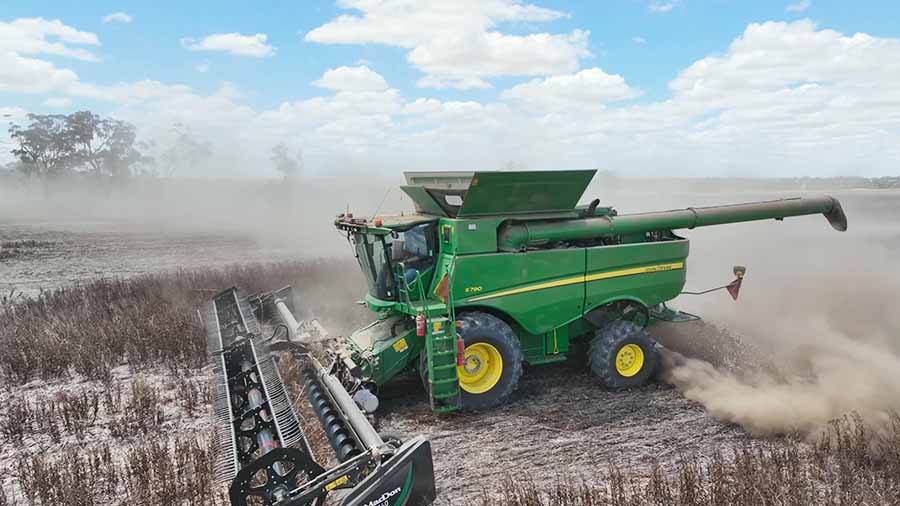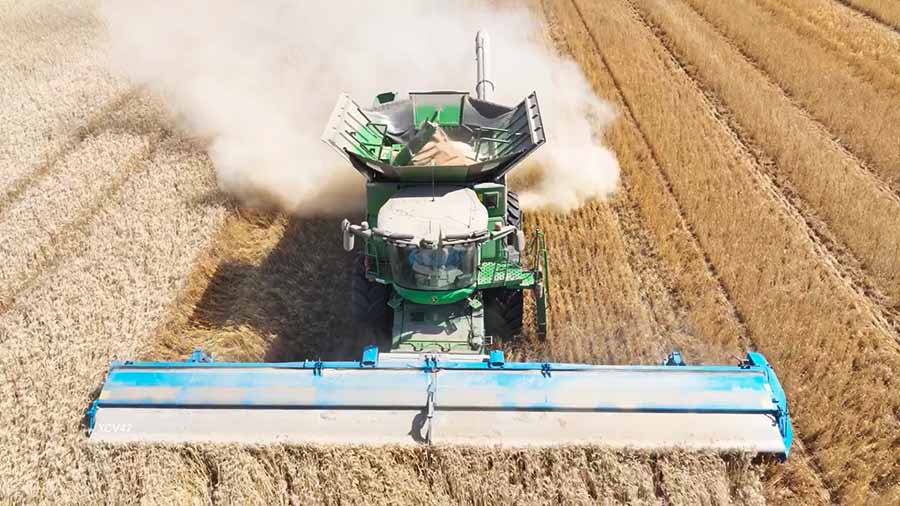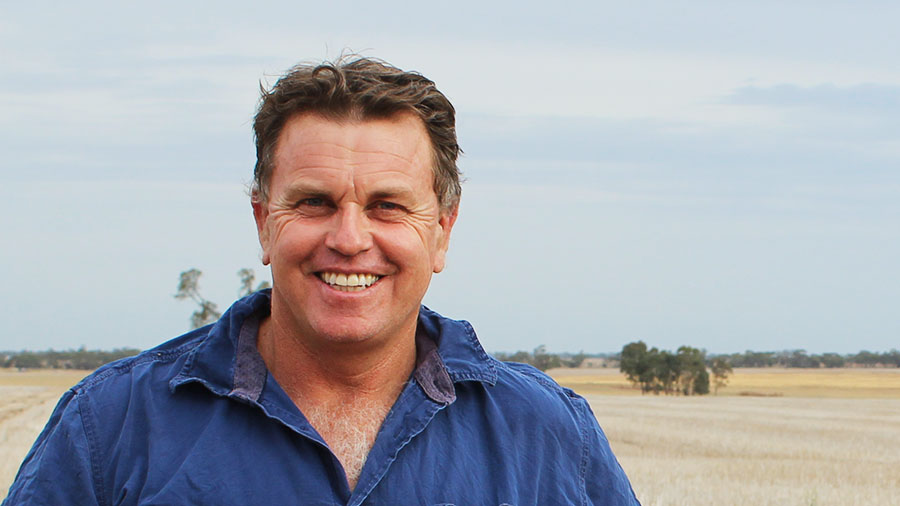In an effort to prevent weed seed set in the wheat crops, Ted bought a Seed Terminator in 2021.
 The Seed Terminator pulverises chaff, killing weed seeds and volunteer grains, with the powder then spat out the back of the header.
The Seed Terminator pulverises chaff, killing weed seeds and volunteer grains, with the powder then spat out the back of the header.
The Seed Terminator - manufactured by an Australian-owned company of the same name - is a simple attachment retrofitted to a harvester that takes the chaff component of a harvested crop and pulverises it into powder in a multi-stage hammer mill, killing weed seeds and volunteer grains. The powder is then spat out the back of the header and falls onto the paddock as sawdust-style debris.
Seed Terminators fall into the 'impact mill' subcategory of harvest weed seed control. Impact mills are one of 6 harvest weed seed control tools being used by Australian grain growers, alongside narrow windrow burning, chaff carts, the bale direct system, chaff tramlining and chaff lining.
With a Seed Terminator having been on Ted's radar for a while, the decision to purchase one was not a matter of 'if' but 'when'. Having been through a string of good seasons leading up to 2021, Ted says the farm was in a period of being able to afford the significant cost (Seed Terminators are around $110,000).
I enquired early one week, and it arrived and was fitted that Friday.
Despite buying the attachment in the middle of the COVID-19 pandemic, there was no delay to getting the Seed Terminator on-farm and installed. 'Every international purchase at the time was a case of "forget about it for two years", but this was Australian made,' Ted says. 'I enquired early one week, and it arrived and was fitted that Friday.'
Benefits
The Seed Terminator's main benefit - its role in destroying weed seeds - will take several years before Ted can see tangible benefits with the naked eye, as ryegrass numbers are already quite low. But Ted says there are many other aspects of the attachment that make it a good choice for harvest weed seed control.
The Seed Terminator pairs nicely with Ted's harvester - a John Deere header with a stripper front. The stripper front strips the grain from the crop and leaves the plant stem standing. This means the amount of broken chaff that comes through the header and into the hammer mill is limited. With limited material to sort through, the hammer mill can sort material more efficiently, more quickly and more accurately, meaning productivity does not take a hit.
The ability to turn the Seed Terminator on and off is simple, meaning Ted is able to leave the attachment secured to the header and not in use while in paddocks where it is not required. It can also remain attached while other equipment is pulled out of the header, such as sieves to catch snails picked up during harvest.
'If snail numbers are bad enough, we put separate snail sieves in,' Ted says. 'Some other harvest weed seed control attachments require a 3-hour effort to take it off to put the sieve in, and then another 3 hours to put the attachment back on. Then it's another 6-hour job taking the attachment off and putting it on again when you want to take the snail sieve out. But with the Seed Terminator, it slides on over the top and doesn't impact anything else.'
Drawbacks
Ted says extra precautions are needed when using the Seed Terminator, as the powdered debris released behind the header can cause poor visibility. The dust also causes issues with the cleanliness of air filters, which fill up quickly.
Ted hasn't had to slow his driving speed significantly while the Seed Terminator is turned on, largely due to the use of a stripper front, which doesn't collect plant stems. As incoming material increases (which would be the case if plant stems were collected), so would the need for sorting, and if the volume becomes excessive, driving speed must be reduced to manage the continuous influx. Ted has heard reports from others that harvesting capacity can be reduced by up to 50% in some cases, depending on the header type and yield. The higher yielding a crop is, the more limiting the Seed Terminator could be on harvesting speed.
'Any wheat crop yielding over 4.5t/ha is a situation where the Seed Terminator can be limiting, but in a lower-yielding environment of 3t/ha or below, I don't think it makes any difference,' Ted says.
When rainfall is on the horizon during harvest, there can be a trade-off between travelling slowly with the Seed Terminator turned on - therefore compromising the amount of grain reaped and subsequently the quality of unharvested grain - or travelling quickly with the Seed Terminator turned off - compromising harvest weed seed control.
If a mechanical weed destructor can destroy weed seeds without the need for any herbicide, then it's a win.
While Ted always opts to leave the Seed Terminator running in wheat crops, he says fellow farmers may turn it off, prioritising harvest speed.
'The ability to harvest so much grain in one day, compared to what our forebears did, is serious money. If you are going at half pace or two-thirds pace, then leaving the rest unharvested, exposed and potentially impacted by rain really adds up and can be a big cost,' Ted says.
According to Ted, using the Seed Terminator increases fuel usage by about 15%. While that is an increased cost to the hip pocket, there are potential savings in herbicide cost.
'If a mechanical weed destructor can destroy weed seeds without the need for any herbicide, then it's a win. It's even more of a win if those weeds were herbicide tolerant anyway - the benefits of that would definitely outweigh the cost of extra fuel,' Ted says.
The benefits of reducing herbicide use extend beyond Ted's farmgate as well. Any reduction in herbicide use plays a small part in delaying the rapidly evolving herbicide resistance that is being seen on a global scale.





